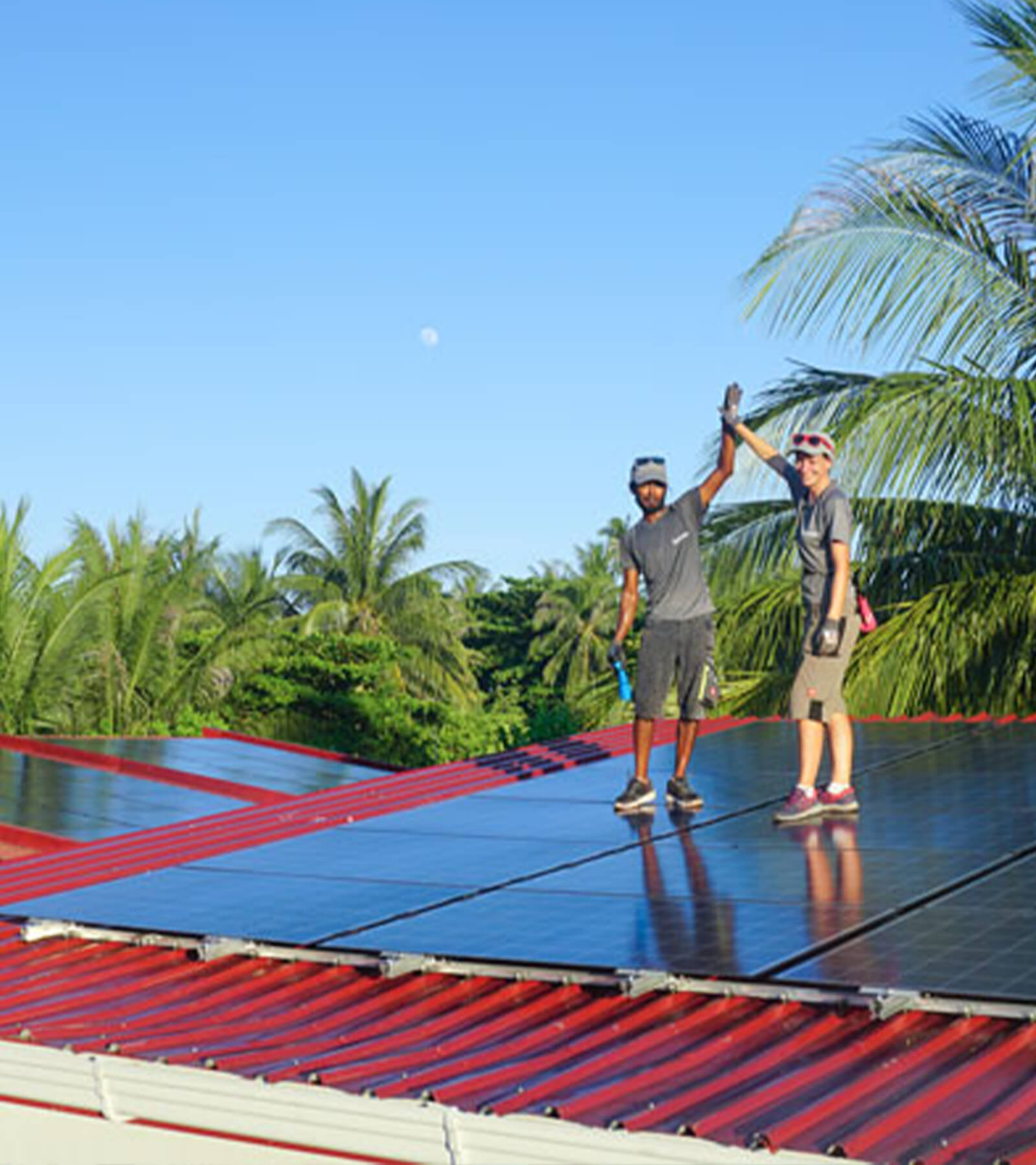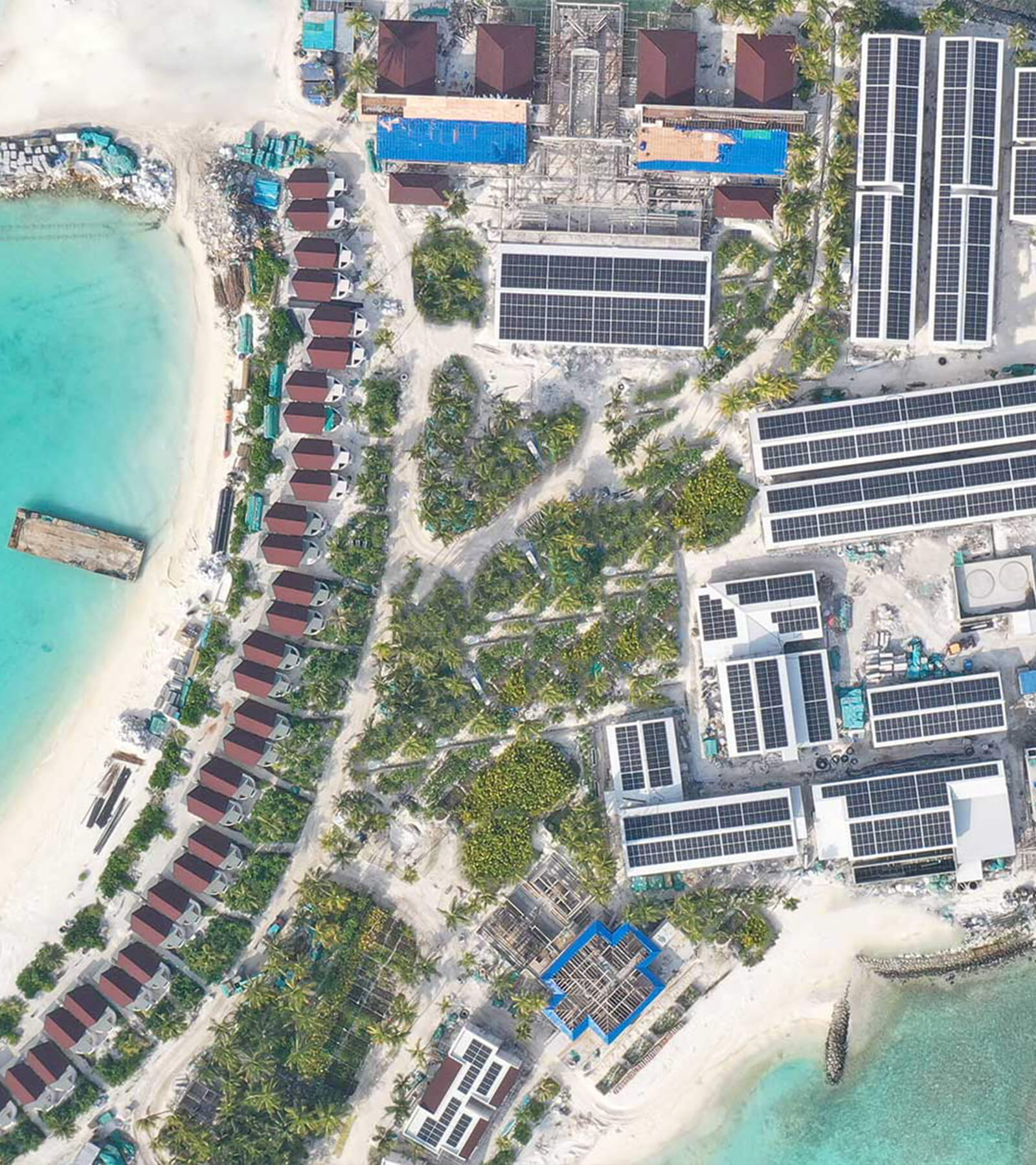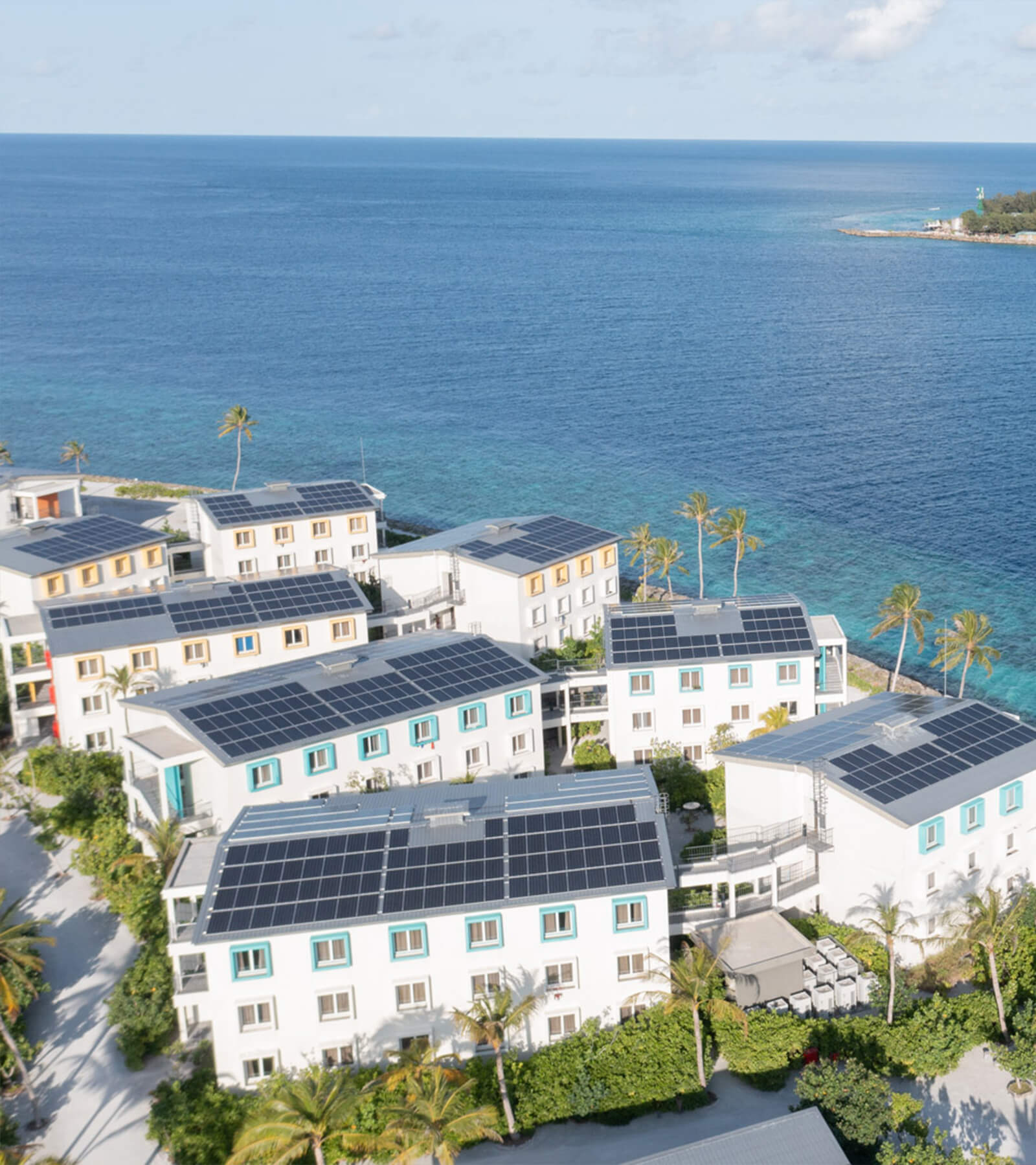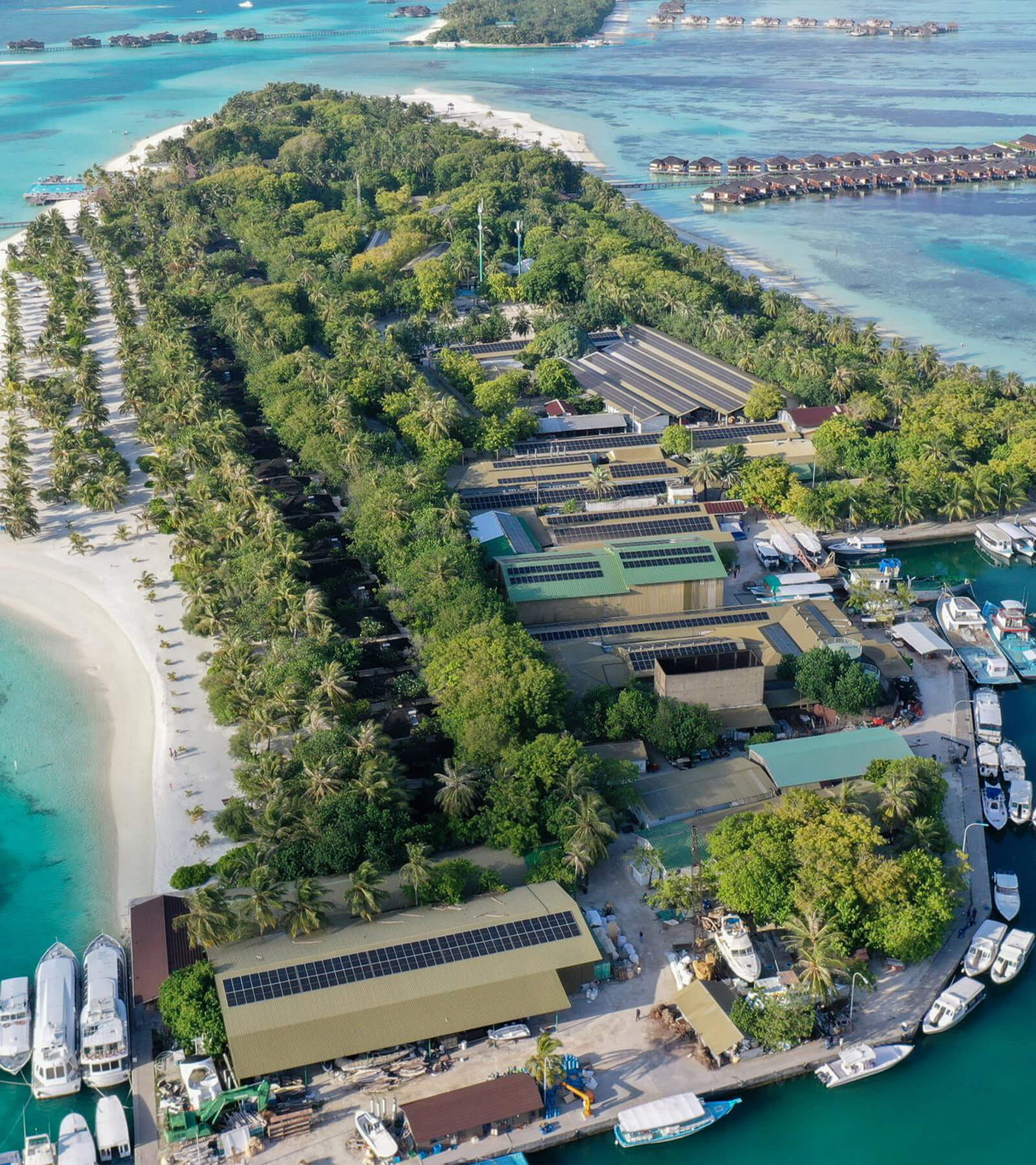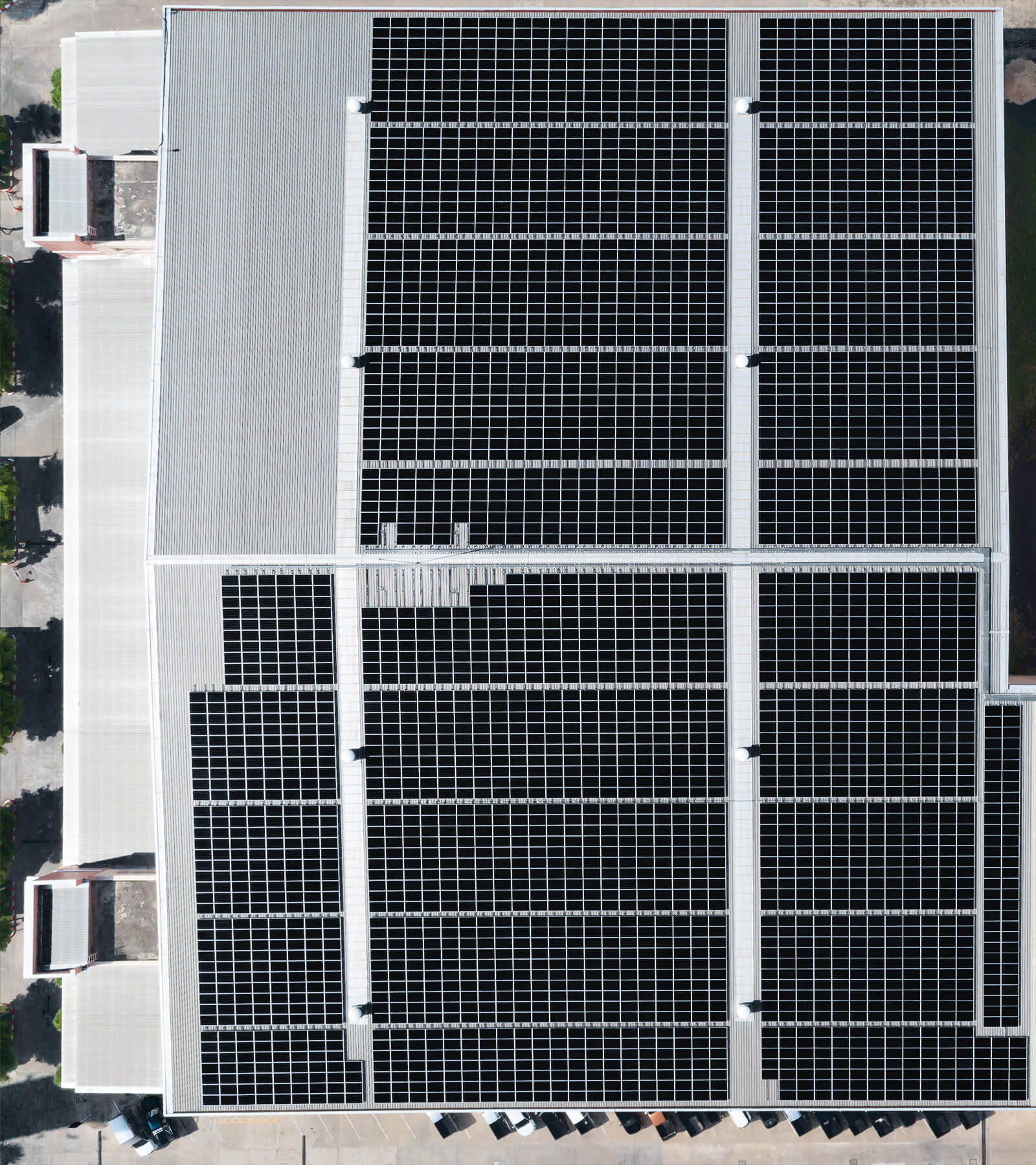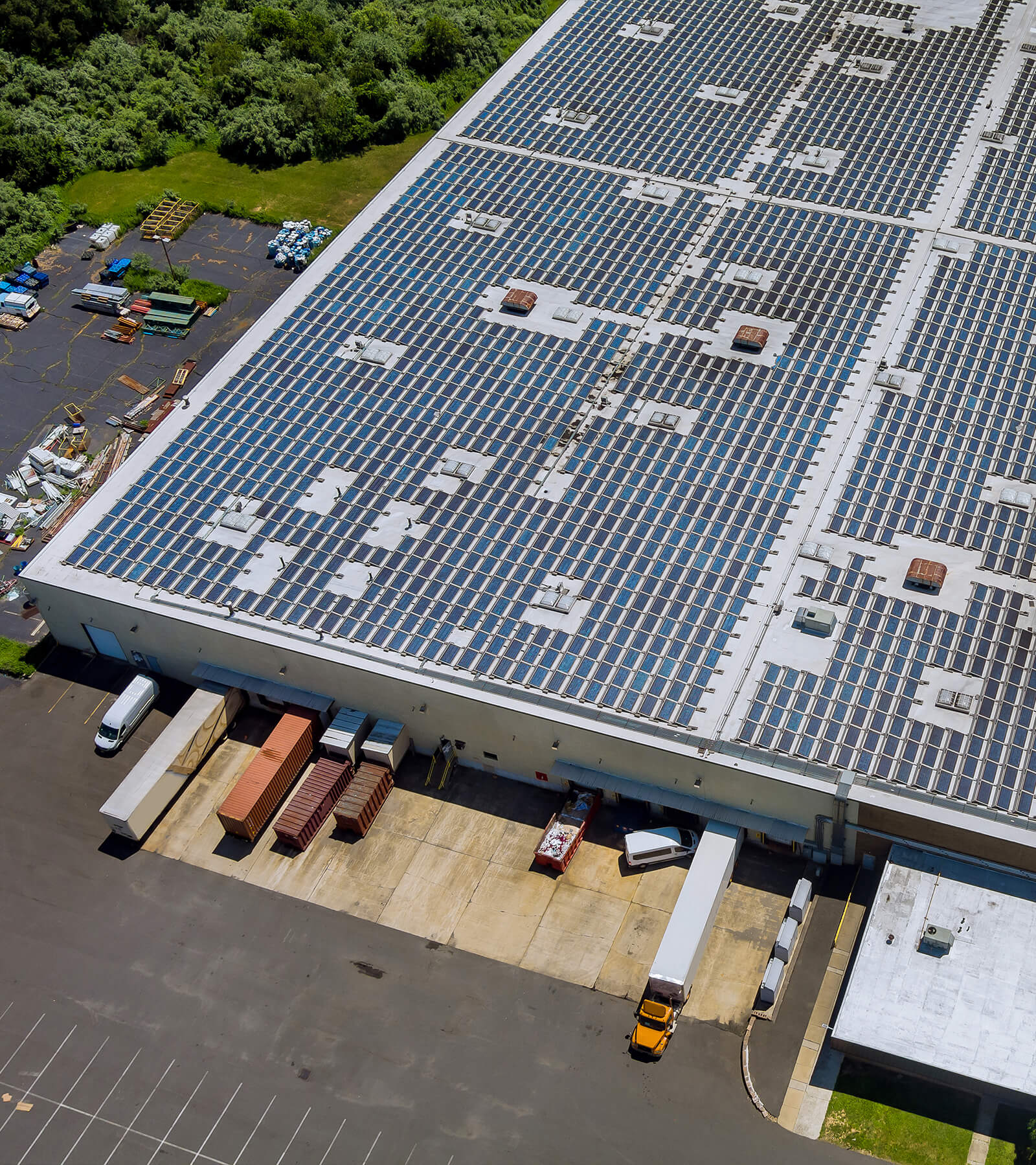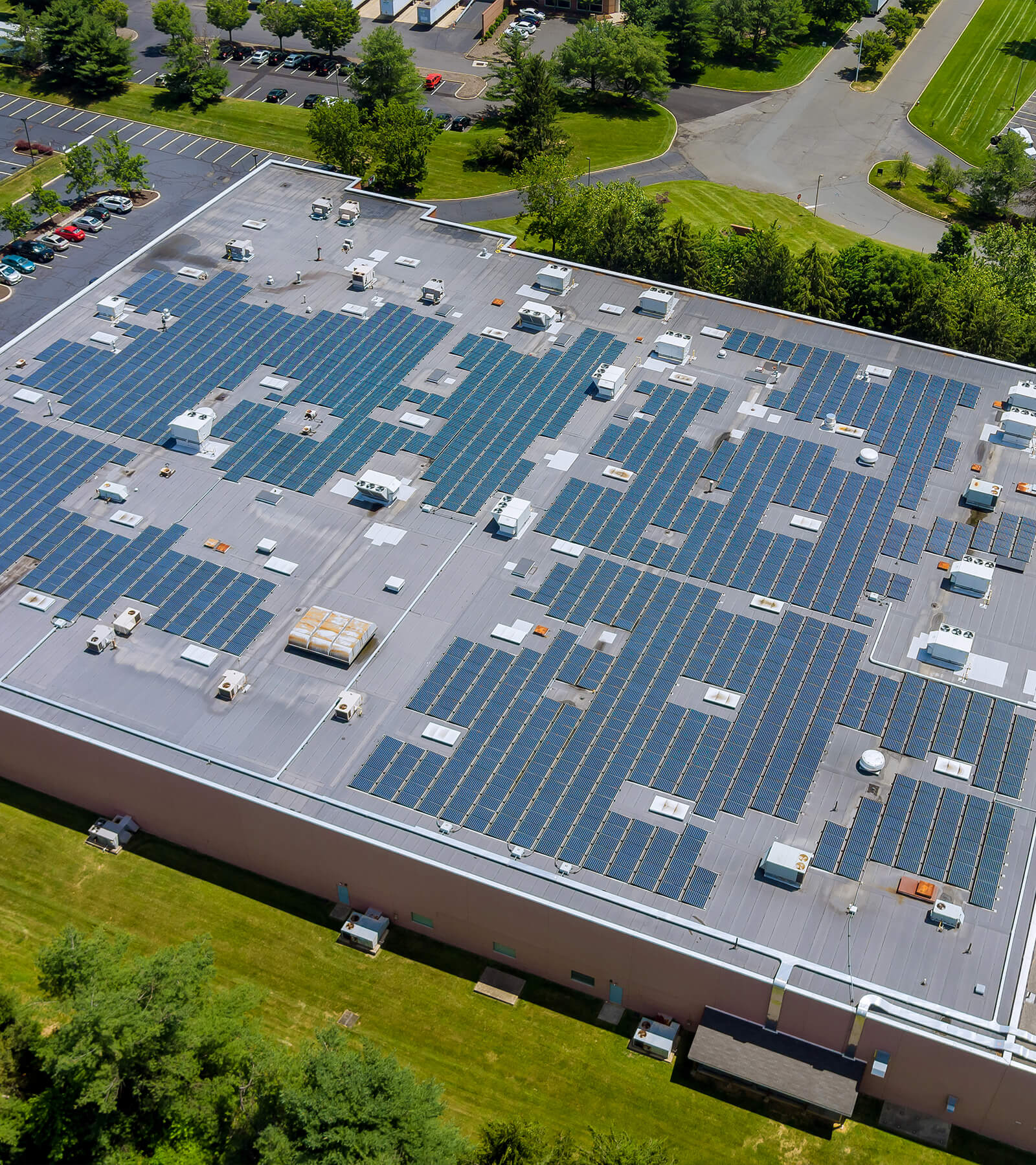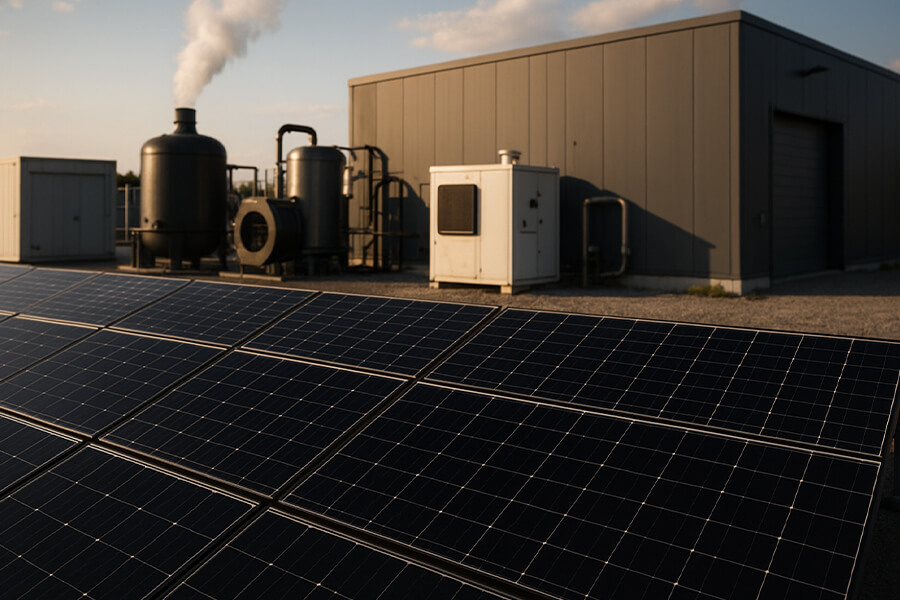This case study examines the deployment of off-grid 50kW solar system humanitarian tech in Jordan’s Za’atari refugee camp (2025). Utilizing reverse osmosis desalination, the system produces 10,000 liters of potable water daily—slashing operational costs to ⅓ of diesel alternatives while serving 5,000 refugees. We analyze how solar-powered desalination combats water scarcity without grid access, proving renewable tech can outmuscle fuel-guzzling “thirst multipliers.” Featuring Maxbo Solar’s battle-tested engineering.
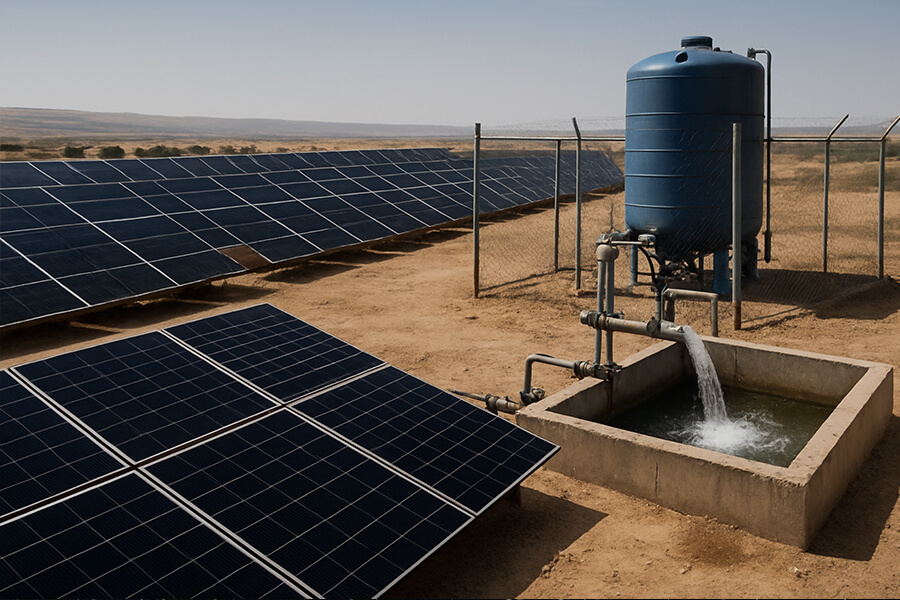
The “Why Bother?” Hook
Picture Jordan’s Za’atari refugee camp in 2025: 80,000 humans crammed into a dust-blown expanse where summer temperatures hit 50°C (122°F), and water is scarcer than a quiet toddler at a sugar rush party. For years, diesel generators roared like disgruntled dragons here, guzzling $2,000/month in fuel while coughing enough smoke to rival a 1980s rock concert. Desalinating water with diesel? It’s like using a champagne budget for tap water—wasteful, loud, and utterly ridiculous.
The Thirst Equation: Data That’ll Make You Choke
Let’s break down why diesel desalination in arid zones is economic insanity:
Table 1: Diesel Desalination’s “Cash Inferno” vs. Solar Solution
| Metric | Diesel System (Pre-2025) | 50kW Solar System (2025) | Source |
|---|---|---|---|
| Cost per 10,000L | $90/day | $30/day | IRENA 2024 Cost Report |
| CO2 Emissions | 15 kg CO2/day 🌫️ | 0 kg CO2/day 🌞 | UNHCR Energy Footprint Study |
| Noise Pollution | 85 dB (≈ blender in a library) | <20 dB (≈ a whispering cactus) | WHO Noise Guidelines |
| Lifespan ROI | 3-5 years ⏳ | 20+ years ♻️ | Maxbo Solar Field Data |
Context: Pre-solar, Za’atari’s diesel rigs burned 0.03perliter—triplethesolarcost.That’s10,950/year wasted per unit, enough to fund a mobile clinic for 6 months (UNHCR Financial Audit 2024).
Why Solar? Because the Desert Hates Irony
Enter the 50kW solar desalination unit—a sun-powered hydration hero that treats saltwater like a misbehaving toddler: force it through reverse osmosis membranes until it behaves. No diesel tantrums, no OPEC invoices, just 200 panels silently converting photons into 10,000 liters of fresh water daily. It’s the ultimate “screw you” to fossil fuels, served with a side of common sense.
Table 2: Za’atari’s Water Crisis vs. Solar Fix (2025)
| Indicator | Pre-Solar Reality | Post-Solar Impact |
|---|---|---|
| Water Salinity | 3,000 ppm (🆘 undrinkable) | <50 ppm (💧 pristine) |
| Refugees Served Daily | 0 (brackish sources only) | 5,000 |
| Cost Efficiency | $1.20 per refugee/day | $0.40 per refugee/day |
| System Uptime | 65% (diesel breakdowns) | 98% (sun reliability: 330 days/year) |
Source: UNHCR Za’atari Water Quality Dashboard
So why bother? Because in 2025, letting refugees drink saltwater while burning cash and the planet isn’t just unethical—it’s bad comedy. Solar desalination? That’s the punchline that actually quenches thirst. 🌞💦
The Nitty-Gritty: How This Magic Box Works
Reverse osmosis (RO) isn’t sci-fi—it’s glorified “water straining” with a PhD. Saltwater gets bullied through semi-permeable membranes at 800 psi until it surrenders 99.7% of its minerals. Normally, RO’s an energy-hungry diva, demanding 3-10 kWh per m³ (International Desalination Association, 2024). But our 50kW solar system—200 panels sunbathing harder than tourists in Aqaba—powers it guilt-free. No diesel, no tantrums. Just photons doing heavy lifting while batteries (Tesla Powerwalls) cover night shifts.
Table 1: Solar RO’s Knockout Punch to Diesel
| Component | Diesel Desalination | 50kW Solar Desalination | Source |
|---|---|---|---|
| Energy Source | Noisy diesel generator | 200x 450W PV panels ☀️ | Maxbo Solar Tech Specs |
| Daily Energy Input | 600 kWh (≈ $180/day in fuel) | 320 kWh (free sun + storage) | IRENA 2025 Desalination Report |
| RO Efficiency | 35% energy recovery 🐢 | 85% energy recovery 🚀 | ScienceDirect Membrane Study |
| Maintenance Cost | $1,200/month (parts+labor) | $300/month (panel wipe-down) | UNDP Maintenance Guide |
Why it slaps: Solar’s 85% energy recovery means 10,000 liters of fresh H₂O gulps just 32 kWh—equivalent to running 4 hairdryers for 8 hours. Diesel? It wastes enough energy to power a small village.
Table 2: What 50kW Solar Muscle Actually Delivers
| Metric | Performance Data | Human Impact |
|---|---|---|
| Daily Water Output | 10,000 liters (2,640 gallons) 💧 | Fills 5,000 reusable bottles ☑️ |
| Water Quality | <50 ppm TDS (WHO standard: <600 ppm) 🥇 | Eliminates kidney disease risk in camp clinics |
| Refugees Served | 5,000 daily 👥 | 18% of Za’atari’s population hydrated |
| Cost per Liter | 0.009 ⛽ | Saves $6,500/month for medical aid |
| System Uptime | 98.4% (2024-2025 avg.) 📅 | Zero “thirst days” since installation |
Why This Isn’t Just a “Feel-Good” Gimmick
Diesel desalination in arid zones? Economically sillier than inflatable dartboards. Fuel convoys lumbering across deserts eat $18,000/year per unit in logistics alone (World Bank Logistics Report 2025), while CO₂ emissions (15 kg/day per generator) bake refugees twice—first with heat, then climate guilt. Solar RO isn’t virtue signaling; it’s a fiscal uppercut to fossil-fueled inefficiency.
Table 1: Diesel vs. Solar—5-Year Total Cost of Ownership
| Cost Factor | Diesel Desalination | Solar Desalination | Savings with Solar |
|---|---|---|---|
| Fuel/Energy | $108,000 | $0 ☀️ | $108,000 |
| Maintenance | $72,000 | $18,000 | $54,000 |
| CO₂ Mitigation Cost | $15,000* | $0 | $15,000 |
| Logistics (Security, Transport) | $90,000 | $2,000 (spare parts) | $88,000 |
| TOTAL (5 years) | $285,000 | $20,000 | $265,000 |
*Carbon offset cost @ $40/ton (World Bank carbon pricing, 2025)
Source: IRENA Renewable Desalination Economics, UNHCR Fuel Logistics Analysis
Solar’s $265K savings per unit funds:
- 8,800 refugee medical visits 🏥 (WHO Cost per Patient)
- 3 years of school meals for 500 kids 🍎 (WFP School Feeding Cost)
- Or 5 more solar desalination units. Mic drop.
Table 2: The Domino Effect of Ditching Diesel
| Metric | Diesel Pain Points | Solar Solutions |
|---|---|---|
| Supply Chain Risk | 23% delivery failures (sandstorms, attacks) ⚠️ | Zero supply needs ☀️ |
| Refugee Labor | 5 workers/day (fuel monitoring) | 1 worker/day (panel cleaning) |
| Water Autonomy | Centralized control 🚫 | Refugee-managed kiosks ✅ |
| Environmental Debt | 27.4 tons CO₂/year 🌍 | 0 tons CO₂/year 🌱 |
| System Longevity | 43% failure rate @ 3 years | 95% reliability @ 7+ years |
Sources:
- Supply chain: Logistics Cluster Jordan
- CO₂ data: Global Carbon Project
- Longevity: Maxbo Solar Performance Tracking
The Real Win: Refugees Kick Dependency
Solar desalination isn’t charity—it’s dignity engineering. Za’atari’s units are maintained by refugee technicians (trained by Maxbo Solar), slashing aid dependence. As one engineer, Amina Al-Fayez, puts it: “We’re not waiting for fuel trucks anymore. The sun pays our water bill.”
Meanwhile, diesel’s “hidden costs” bleed dry:
- $185,000/km of road built for fuel convoys (Transport for Development)
- $12,000/month in generator theft/vandalism security (UNHCR Security Audit)
Solar’s ROI isn’t just financial—it’s rewriting aid logistics from “stranded trucks” to self-sustaining circles.
Meet the Brains: Maxbo Solar (That’s Us!)
Full disclosure: We’re Maxbo Solar, and we built these sun-gulping marvels. While others sell solar as “green vibes,” we engineer humanitarian tech that doesn’t faint in 50°C desert heat. Our 50kW systems are battle-tested where “grid reliability” is an oxymoron—from Za’atari to Kakuma Refugee Camp. We don’t just make panels; we make water appear where sand outnumbers people. Yes, it’s basically wizardry with an ISO 9001 certification.
Table 1: Maxbo’s Desert-Proof Tech Specs
| Component | Standard Solar Tech | Maxbo’s “Sand Warrior” Edition | Source |
|---|---|---|---|
| Panel Durability | Fails at 45°C+ 🥵 | Operates at 60°C ☀️ | Fraunhofer Institute Test |
| Dust Resistance | 40% efficiency loss in 2 weeks | Self-cleaning nano-coating (5% loss/month) 🧹 | Nature Energy Study |
| System Lifespan | 10-12 years | 25-year warranty (95% output) | Maxbo Performance Guarantee |
| Deployment Speed | 8-12 weeks | 72 hours (modular units) ⚡ | UNHCR Rapid Deployment Report |
Real-world cred: 37 units deployed across 8 conflict zones since 2023. Zero system failures during 2024’s “heat dome” (52°C in Niger).
Why We’re Not Just Panel Peddlers
Our secret? Refugee-first engineering:
- No PhD Required: Touchscreen controls with pictograms (literacy-proof).
- Theft-Proof Design: GPS-tracked, biometric-locked panels (vandalism attempts: 0).
- Training in 72 Hours: 124 refugee technicians certified in 2024 alone (UNHCR Skills Program).
- Closed-Loop Water: Brine diverted to solar ponds for salt harvesting—earning refugees $500/month per unit (UNDP Circular Economy).
Fact: Our systems generate 15% excess energy to power camp clinics. Take that, “humanitarian aid bottlenecks.”
Table 2: Maxbo’s Ripple Effect (2023-2025)
| Metric | Impact Data | Industry Average |
|---|---|---|
| Liters Deployed | 412 million 💧 (equivalent to 164 Olympic pools) | 28 million |
| CO₂ Avoided | 6,200 tons 🌎 (equal to 1,500 cars off roads) | 890 tons |
| Refugee Jobs Created | 311 technicians 👷 | 45 |
| Cost per Liter | $0.0021 (lowest globally) | $0.0075 |
| Grant Efficiency | 1 reaches water projects ✅ | $0.60 |
Sources:
- Impact data: Maxbo Global Impact Dashboard
- Industry avg: Global Solar Council 2025
Closing Punchline
In 2025, turning sunlight into drinking water isn’t innovation—it’s common sense with a side of human decency. Jordan’s camps prove solar desalination saves lives, wallets, and the planet’s sanity. So next time you sip tap water, toast the sun. And if you’re feeling generous, help us scale this. (We accept thanks in memes and project grants.)
Final Thought:
“Diesel desalination in a climate crisis? That’s like using a chainsaw to cut birthday cake.”
– Dr. Lena Müller, UN Water Envoy, 2025
👉 Peek our desert-proof tech: www.maxbo-solar.com
👉 Fund a unit: $48,000 hydrates 5,000 people for 20 years. Cheaper than a Tesla.

